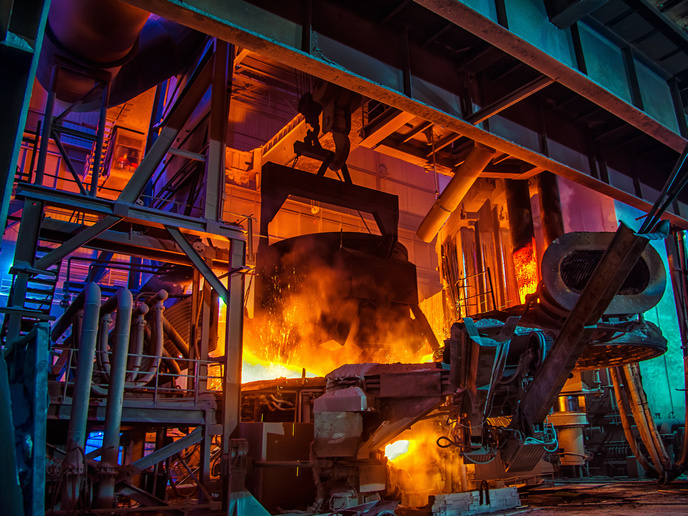Effective CO2 reduction for industrial steel plants
Reducing carbon dioxide (CO2) emissions – a major cause of global warming – is critical if net zero(opens in new window) emission targets are to be achieved. To keep global warming to no more than 1.5 °C – as called for in the Paris Agreement(opens in new window) – emissions need to be cut by 45 % by 2030 and reach net zero by 2050. “There is a real risk of us not making this target in time,” remarks C4U(opens in new window) project coordinator Haroun Mahgerefteh from University College London(opens in new window). “Something needs to be done, and one thing we can do is target the major emitters.”
Capturing CO2 from industrial sources
Steel production, responsible for around 8 % of all industrial emissions, is a prime example. A great deal of energy is required to convert raw material into steel, and huge amounts CO2 are produced in the process. For every tonne of steel, two tonnes of CO2 are created. The EU-funded C4U project set out to show how carbon capture, utilisation and storage (CCUS) technologies can be used at scale to significantly reduce steel industry CO2 emissions. CCUS techniques work by capturing CO2 from industrial sources – or directly from the atmosphere – and where possible converting it into useful products or permanently storing it in sealed geological storage sites to prevent its release into the atmosphere. “The challenge is doing this at scale in a cost-effective way that doesn’t harm the environment,” notes Mahgerefteh. “Also, CO2 is created at several points of a steel plant, where the composition and quality of CO2 can vary. You therefore need more than one CCS technology.”
Affordable and environmentally benign carbon capture and storage techniques
C4U advanced two carbon capture and storage (CCS) techniques designed to be affordable and environmentally benign. Known as DISPLACE and CASOH(opens in new window), the technologies remove particulate matter or other solids from gas streams at elevated temperatures, often exceeding 400 °C, and can capture up to 90 % of CO2 produced in a plant. The two technologies were scaled up and demonstrated at two plants in Spain and Sweden. They were connected to real CO2 streams coming from the steel plants, to show the efficacy and feasibility of integrating both techniques at industrial scale. The project also wanted to show that recovered heat at very high temperatures can be used for energy-demanding processes within the steel plant (i.e. reheating furnaces and CO2-free power generation) and help to decarbonise other energy-consuming(opens in new window) processes in the plant.
Societal benefits of effective CCS technologies
C4U also put forward the societal benefits of affordable and effective CCS technologies. Presentations, conferences and workshops were held, often involving the public. “We need to have strong narratives to have society on board,” says Mahgerefteh. The project also developed business models in order to ensure that industry is on board as well. “This technology requires significant amounts of investment, so we focused on looking at where these resources could come from,” adds Mahgerefteh. Other issues such as the efficient and safe transportation of CO2 were examined. Following completion of C4U, both technologies have been licensed and are in the process of being translated into commercially viable products. “This along with being named as the UK National Winner of the Mission Innovation Outstanding Projects category at COP29(opens in new window) in November 2024, is a clear measure of success of the project,” says Mahgerefteh.



